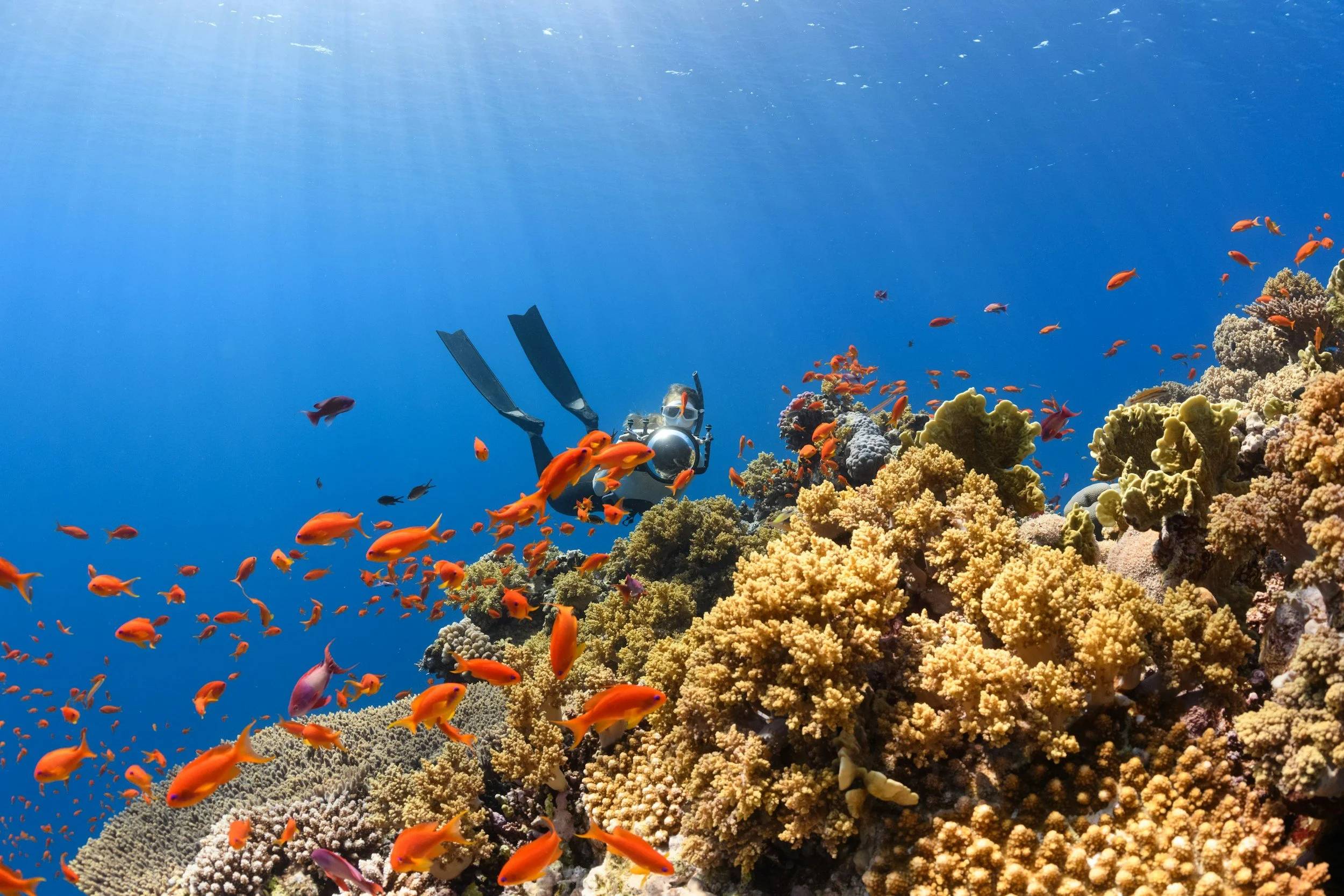
What You Need To Know About Coral Bleaching
What You Need To Know About Coral Bleaching
Written by: Keya Gambhir
Coral reefs are some of the most colorful and lively places in the ocean. They are home to clownfish, sea turtles, jellyfish, sharks, starfish, and even the ingredients for some medicines. But something dangerous is happening. Corals are turning completely white. This is called coral bleaching, and it’s a sign that reefs are in serious trouble.
Let’s dive into what coral bleaching is, why it happens, and how we can help stop it.
What Is Coral Bleaching?
Even though they look like rocks, corals are actually tiny animals called polyps. Inside their bodies live microscopic algae called zooxanthellae. These algae give coral its bright colors and help make food using sunlight, just like plants. In return, the coral gives the algae a safe place to live.
When the ocean gets too hot or when conditions change quickly, the coral gets stressed. It pushes the algae out of its body. Without the algae, the coral turns white. This is called bleaching because it looks like the coral has been bleached clean.
A bleached coral is not dead, but it is in danger. Without the algae, the coral has very little food and becomes weak. If the ocean does not return to normal soon, the coral can get sick and die.
What Causes Coral Bleaching?
The number one cause of coral bleaching is climate change. When the planet heats up, so do the oceans. Even a small temperature change of just 2 degrees Fahrenheit or 1 degree Celsius for a few weeks can cause coral to bleach.
Other causes include UV radiation from the sun, especially when the ocean water is shallow. Pollution from trash, oil, or chemicals can also stress corals. When tides are very low, some corals are exposed to the air and hot sun, which can damage them. Water quality is another big factor. Dirty or polluted water can harm coral reefs quickly.
Corals are extremely sensitive to changes in their environment. Even small changes can have big effects.
Where Is Coral Bleaching Happening?
Bleaching is happening in oceans all over the world, but one of the hardest-hit areas is the Great Barrier Reef in Australia. It is the largest coral reef system in the world.
Since 1998, the Great Barrier Reef has experienced nine major bleaching events. Six of those have happened since 2016. In 2025, both the Great Barrier Reef and another reef called Ningaloo bleached at the same time for the first time in history. In 2022, the Great Barrier Reef bleached during a cooler season, which usually protects the coral. This shows just how serious the problem has become.
Between 2014 and 2017, about 75 percent of the world’s tropical coral reefs experienced heat stress that could cause bleaching. For 30 percent of those reefs, the heat was strong enough to kill coral.
Why Does Coral Bleaching Matter?
Coral reefs are home to thousands of sea creatures. They provide food, shelter, and protection for animals like sea turtles, fish, shrimp, jellyfish, crabs, starfish, and seabirds. Many baby sea creatures grow up in reefs before moving into the open ocean. Without healthy coral, entire food chains can collapse and some animals may go extinct.
Bleaching also affects humans. Coral reefs protect coastal towns from strong waves and storms by absorbing wave energy. If they disappear, communities may have to build expensive and less effective seawalls. Coral reefs are also important for people who fish for a living or rely on seafood for food. Bleached reefs can’t support the same kinds of fish and animals. Finally, coral reefs attract tourists from all over the world. Snorkeling, diving, and reef tours bring in billions of dollars and support thousands of jobs. When coral reefs die, these jobs and businesses are at risk too.
Can Coral Reefs Recover?
Sometimes yes. If the water cools down and conditions improve soon after bleaching, the algae can return and the coral can recover. But if the stress continues or if bleaching happens too often, the coral will die. Some reefs have been bleached again and again in recent years without enough time to heal.
Coral reefs are strong, but they can only bounce back if we give them a chance.
How Can We Help?
Even if you live far from the ocean, there are many ways you can help coral reefs. Use less energy at home and school to fight climate change. Walking, biking, or carpooling also helps reduce pollution. Keep local waterways clean by not littering or pouring anything down the drain that could harm the ocean. If you swim in the ocean, use reef-safe sunscreen that doesn’t hurt coral.
You can also support organizations that protect coral reefs, like WWF and the Great Barrier Reef Foundation. These groups are working to stop pollution, plant new coral, and fight climate change by using clean energy and smarter policies.
Coral reefs are amazing and full of life, but they are in danger. The good news is that we are not too late. If we work together and take action now, we can save coral reefs and keep them colorful and alive for years to come.
References
Great Barrier Reef Foundation. 2024. “Coral Bleaching.” Great Barrier Reef Foundation. https://www.barrierreef.org/the-reef/threats/coral-bleaching
NOAA. 2024. “What Is Coral Bleaching?” National Ocean Service. National Oceanic and Atmospheric Administration. https://oceanservice.noaa.gov/facts/coral_bleach.html
WWF. 2024. “Everything You Need to Know About Coral Bleaching—and How We Can Stop It.” World Wildlife Fund. https://www.worldwildlife.org/pages/everything-you-need-to-know-about-coral-bleaching-and-how-we-can-stop-it
